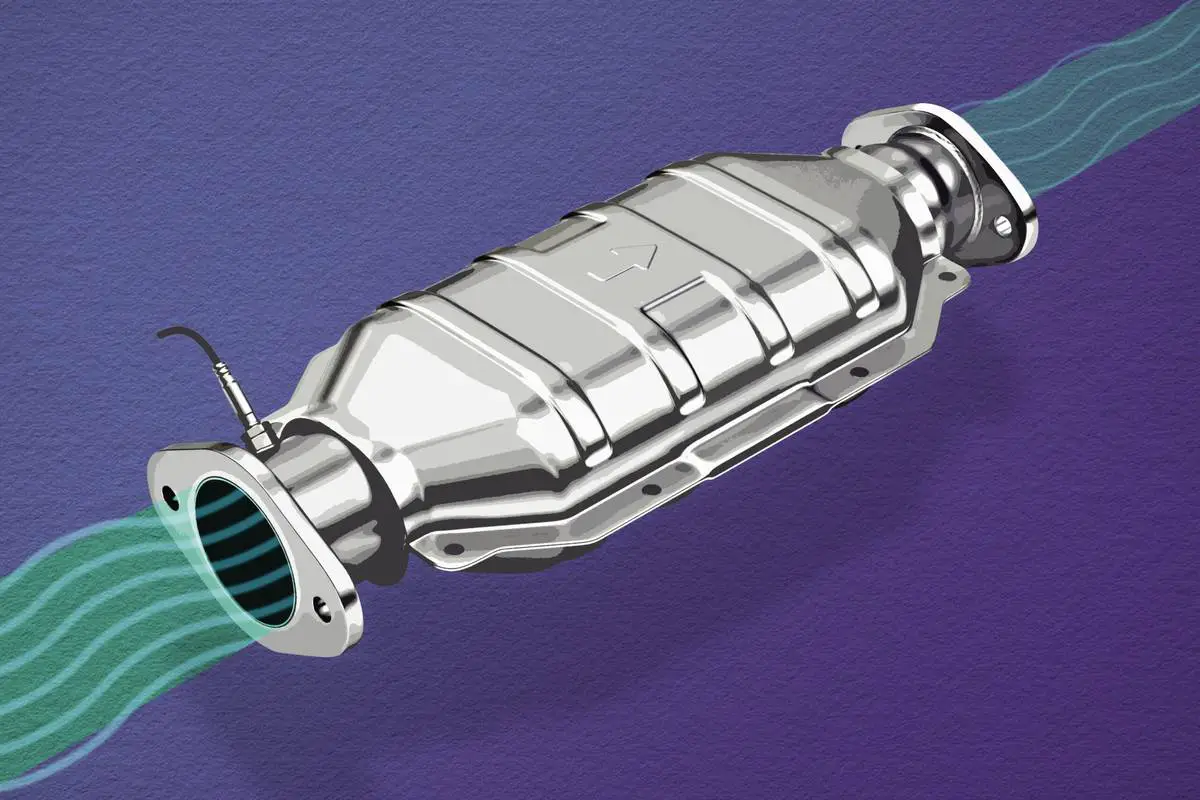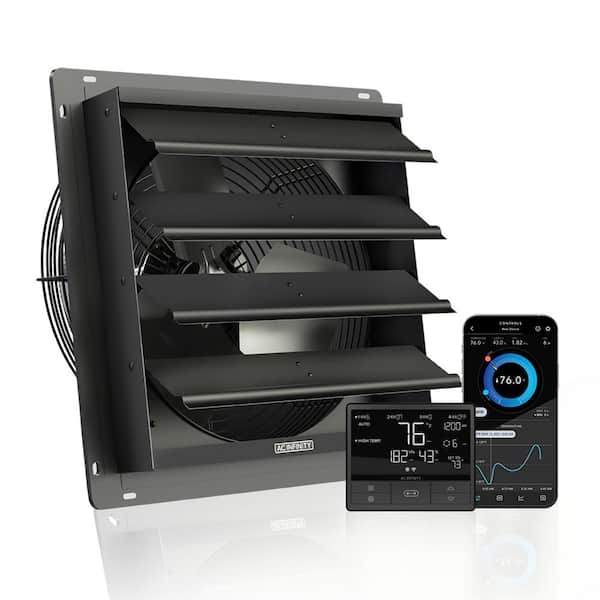The high exhaust temp light indicates potential engine issues, such as a clogged filter or malfunctioning sensor. Addressing these promptly is crucial to prevent damage.
Experiencing a high exhaust temp light coming on in your vehicle can be concerning. This warning light is an indication of elevated temperatures in the exhaust system, which could signal underlying problems. Issues such as a clogged diesel particulate filter (DPF) or a faulty sensor may be causing this alert.
Ignoring the warning can lead to serious engine damage, so it’s essential to address the root cause promptly. We will explore the common reasons for the high exhaust temp light coming on and provide tips on how to troubleshoot and resolve this issue effectively.

- What Is The High Exhaust Temp Light?
- Causes Of High Exhaust Temp
- Symptoms Of High Exhaust Temp
- Troubleshooting The High Exhaust Temp Light
- Solutions To High Exhaust Temp Issue
- Preventive Maintenance For High Exhaust Temp
- When To Seek Professional Help
- Frequently Asked Questions On High Exhaust Temp Light Comes On
- Conclusion
What Is The High Exhaust Temp Light?
When the High Exhaust Temp Light comes on, it indicates excessive heat in the exhaust system. This warning alerts drivers to potential issues that need prompt attention. Ignoring this signal can lead to engine damage and reduced vehicle performance.
What is the High Exhaust Temp Light?Definition
The High Exhaust Temp Light is an indicator that notifies drivers of excessive temperatures in the exhaust system.Function
The High Exhaust Temp Light alerts drivers when the exhaust system is operating at temperatures that could potentially cause damage.Importance
– Prevents damage: Helps prevent damage to the exhaust system by warning of high temperatures. – Safety: Promotes driver safety by indicating a potential issue that may affect the vehicle. – Maintenance: Prompts timely maintenance to address overheating issues proactively. Remember, addressing High Exhaust Temp Light promptly is crucial for vehicle safety and maintenance.Causes Of High Exhaust Temp
The High Exhaust Temp light comes on when the exhaust temperature exceeds normal levels, potentially due to a malfunctioning exhaust system, a clogged catalytic converter, or a faulty oxygen sensor. It is crucial to address these causes promptly to prevent engine damage and maintain optimal performance.
Restricted Exhaust System
A clogged exhaust system can cause high exhaust temperature as the flow of gases is restricted.
Engine Overheating
When the engine overheats, it can lead to high exhaust temperatures triggering the warning light.
Faulty Sensor
If the sensor responsible for monitoring exhaust temperatures is faulty, it may incorrectly trigger the warning light.
Symptoms Of High Exhaust Temp
When the high exhaust temp light comes on, it indicates that the exhaust temperatures are higher than normal. This could be due to a clogged air filter, a faulty turbocharger, or a malfunctioning exhaust gas recirculation valve. It’s important to address this issue promptly to prevent potential engine damage.
Warning Light
When the high exhaust temperature is detected, one of the most common symptoms is the illumination of the warning light on your vehicle’s dashboard. This warning light, usually in the shape of an engine or a thermometer, is a crucial indicator that alerts drivers to potential issues with their exhaust system. It is essential to pay immediate attention to this warning signal as ignoring it could lead to severe damage to your engine and catalytic converter.Reduced Engine Power
Another symptom of high exhaust temperature is a noticeable reduction in engine power. This means that your vehicle may not respond as quickly or perform at its usual level when you press the accelerator. The engine may feel sluggish, and you might experience a lack of acceleration or difficulty reaching higher speeds. Reduced engine power can be a significant concern, as it can affect your vehicle’s overall performance and efficiency.Unusual Exhaust Sound
In addition to warning lights and reduced engine power, another symptom of high exhaust temperature is an unusual sound coming from the exhaust system. You may notice a louder or more aggressive exhaust note, or even a hissing or popping sound. These unusual sounds can indicate that the exhaust system is experiencing excessive heat, possibly due to a clog or blockage in the system. It is crucial to address these strange noises promptly to prevent further damage to the exhaust system and ensure optimal engine performance. Now, let’s summarize the symptoms of a high exhaust temperature:- Warning light illumination on the vehicle’s dashboard
- Reduced engine power, resulting in sluggish acceleration
- Unusual exhaust sounds, such as louder or abnormal noises
Troubleshooting The High Exhaust Temp Light
Troubleshooting the High Exhaust Temp Light is crucial for ensuring the proper functioning of your vehicle. When this light comes on, it’s an indication that there may be an issue with the exhaust system or engine cooling. Addressing the problem promptly can prevent more serious damage and costly repairs.
Check Exhaust System For Blockages
Inspecting the exhaust system for blockages is a fundamental step in troubleshooting the high exhaust temp light. Begin by visually examining the exhaust pipes for any visible obstructions such as debris or damage. Next, use a flashlight to check for blockages in the muffler and catalytic converter. Look for signs of corrosion or physical barriers that might be impeding the flow of exhaust gases.
Verify Engine Cooling System
Ensuring the engine cooling system is functioning properly is essential in addressing the high exhaust temp light. Begin by checking the coolant level in the reservoir. If the level is low, it could lead to overheating and trigger the warning light. Additionally, inspect the radiator and hoses for leaks or damage that may compromise the cooling system’s efficiency.
Test Sensor Function
Evaluating the sensor function is a critical aspect of troubleshooting the high exhaust temp light. To begin, locate the exhaust temperature sensor and verify its connections are secure. Use a multimeter to test the sensor’s electrical output to ensure it is functioning within the specified range. If the sensor is malfunctioning, it should be replaced to restore accurate temperature readings and prevent false alerts.
Solutions To High Exhaust Temp Issue
When your high exhaust temp light comes on, it can be a cause for concern. However, there are several solutions to this issue that can help address the problem effectively.
Clean Or Replace Blocked Exhaust Components
If your high exhaust temp light comes on, it could be due to blocked exhaust components. Regular maintenance and periodic cleaning of the exhaust system, including the catalytic converter and muffler, can prevent blockages and ensure proper functioning of the system.
Repair Engine Cooling System
A malfunctioning engine cooling system can contribute to high exhaust temperatures. Inspect and repair any issues with the radiator, cooling fan, or thermostat to ensure that the engine operates at optimal temperatures, preventing excessive heat in the exhaust system.
Replace Faulty Sensor
If the high exhaust temp light persists, it may be due to a faulty exhaust temperature sensor. Replacing the sensor with a high-quality and compatible replacement can accurately monitor exhaust temperatures, leading to timely detection and resolution of potential issues.

Credit: www.dieselpowerproducts.com
Preventive Maintenance For High Exhaust Temp
If you notice the high exhaust temp light coming on in your vehicle, it is essential to address the issue promptly to prevent further damage and potential breakdowns. High exhaust temperatures can indicate underlying problems, such as a malfunctioning cooling system or sensor issues. By performing preventive maintenance, you can avoid costly repairs and keep your vehicle running smoothly.
Regular Exhaust System Inspection
Regularly inspecting your vehicle’s exhaust system is crucial to prevent high exhaust temperatures. Here are a few steps you can take to ensure the exhaust system is functioning optimally:
- Check for any visible signs of damage or leaks, such as rust, holes, or loose connections.
- Inspect the catalytic converter for blockages or restrictions.
- Clean out any debris or build-up in the muffler and exhaust pipes.
- Ensure the exhaust manifold is securely attached.
- Replace worn-out or damaged components promptly.
Cooling System Maintenance
A well-maintained cooling system plays a vital role in preventing high exhaust temperatures. Follow these preventive maintenance steps to keep your engine cool:
- Regularly check the coolant level and top it up if necessary.
- Inspect the radiator for any signs of damage, such as leaks or corrosion.
- Clean the radiator fins from dirt, bugs, and debris to promote efficient cooling.
- Flush and replace the coolant according to the manufacturer’s recommendations.
Sensor Testing
Faulty sensors can also trigger the high exhaust temp light. To ensure accurate readings and proper functioning of the sensors, you can perform the following tests:
| Sensor | Testing Procedure |
|---|---|
| Oxygen Sensor | Use a multimeter to check the sensor’s resistance and ensure it falls within the specified range. |
| Temperature Sensor | Test the sensor’s voltage output using a voltmeter and compare it to the manufacturer’s specifications. |
| Pressure Sensor | Connect a pressure gauge to the sensor to verify the accuracy of the readings under different operating conditions. |
By regularly inspecting the exhaust system, maintaining the cooling system, and testing the sensors, you can effectively prevent high exhaust temperatures. This proactive approach will help you identify and address issues before they result in costly repairs or breakdowns. Remember to consult your vehicle’s manual and seek professional assistance if you are unsure about any preventive maintenance procedures.
When To Seek Professional Help
If you are facing persistent High Exhaust Temp Light issues and lack technical expertise, it’s crucial to consider seeking professional help for complex repairs.
Persistent High Exhaust Temp Light
If the High Exhaust Temp Light keeps coming on despite basic troubleshooting, it’s best to consult a professional mechanic.
Lack Of Technical Expertise
When DIY efforts are not solving the problem due to lack of technical knowledge, it’s time to reach out to a qualified technician.
Complex Repairs
For intricate repairs that go beyond simple fixes, entrusting the task to a professional ensures proper diagnosis and resolution.

Credit: www.kbs-coatings.com

Credit: www.homedepot.com
Frequently Asked Questions On High Exhaust Temp Light Comes On
What Causes The High Exhaust Temp Light To Come On?
The high exhaust temp light can come on due to a clogged DPF filter, faulty sensors, or excessive driving at high loads and low speeds. It indicates high exhaust temperatures, which can harm the engine if not addressed promptly.
How Can I Prevent The High Exhaust Temp Light From Coming On?
To prevent the high exhaust temp light from coming on, ensure regular maintenance of the vehicle’s exhaust system, avoid prolonged idling, and drive at higher speeds to promote better exhaust flow. Additionally, maintaining proper engine tune-up and ensuring the DPF filter is clean can help prevent issues.
Is It Safe To Continue Driving When The High Exhaust Temp Light Is On?
It is not safe to continue driving when the high exhaust temp light is on, as it indicates potentially damaging exhaust temperatures. Continuing to drive can harm the engine and other components. Stop the vehicle as soon as it is safe to do so and address the issue promptly.
Conclusion
To sum up, if you ever find yourself facing a high exhaust temp light coming on in your vehicle, it’s crucial not to ignore it. This warning sign could indicate a variety of underlying issues, including issues with the cooling system, sensors, or even the exhaust system itself.
By promptly addressing the problem and seeking professional help, you can prevent further damage and ensure the long-term health of your vehicle. Don’t delay; act fast to keep your car running smoothly.